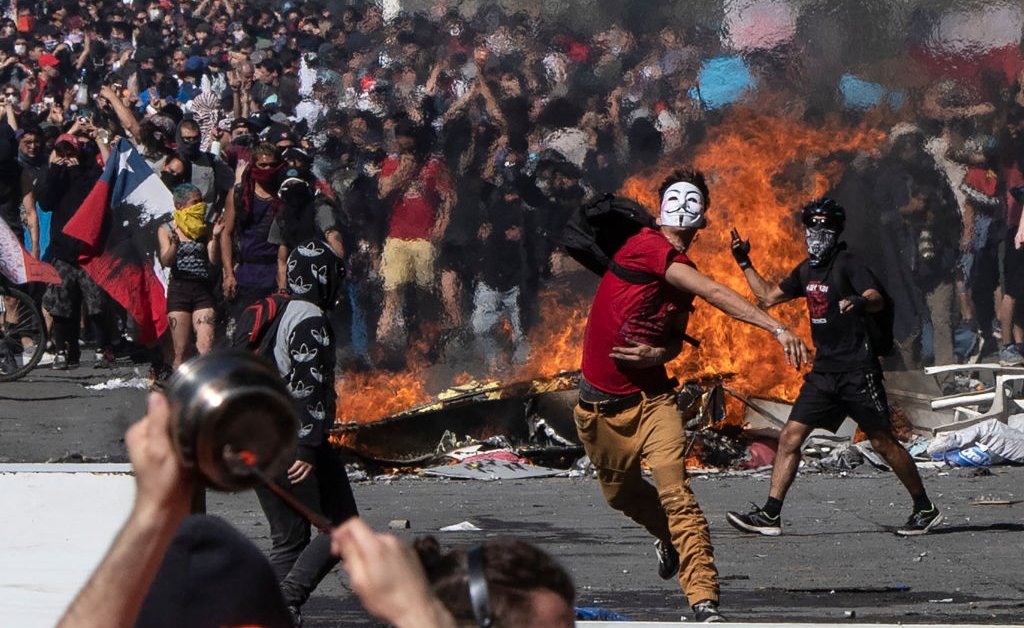
Translating…
With excessive-profile protests raging acrossChile,Colombia,Hong Kong,Sudan,Algeria,Lebanon,India,Spain,Franceand additional, final year it on the full felt as if noteworthy of the field became once out in the streets.
A good deal of it became once. Afile published Thursdayby threat consultancy Verisk Maplecroft finds that a quarter of the field’s countries experienced a “surge” in civil unrest in 2019. And, the file’s authors voice, that unrest is no longer going to die down in 2020.
Remaining year’s protests, spanning South The United States, Asia, Africa, the Middle East and Europe, were when put next to the dull 1960’s, when civil rights, anti-war and anti-colonial movements, combined with the expansion of a youth-led counter culture, precipitated dramatic avenue protests in dozens of worldwide locations.
To attain what’s riding the novel wave of discontent, and why it’s no longer going to proceed this year, Verisk Maplecroft looked at what came about ahead of protests broke out in the 47 countries that experienced an uptick of unrest in 2019.
Governments in a form of those countries implemented connected insurance policies in the hurry as much as the unrest, which might perchance perchance well presumably support to predict future outbreaks. The weakening of mechanisms for expressing discontent — comparable to restrictions on labor unions, or attacks on freedom of the clicking — became once the quantity 1 predictor, taking living in 12 of the 47 countries. A series of authoritarian measures presented in Russia in 2019, along with arecent regulations tightening restrictions on the fetchand recent limits positioned on opposition candidates in local elections, impressed the country’s excellent demonstrationsin eight years.
The second most fashioned indicator that folks had been about to take to the streets became once cuts to gas or meals subsidies, with governments in 9 of the 47 countries making these. In Haiti, the authorities’s plans to lower gas subsidies, which supposed a 38% hike in gasoline costs and 47 % make bigger for diesel,place off arouse over a prolonged-running corruption scandal. In Iran, a gas tag hike precipitated by U.S. sanctionssparked protests in a dozen cities, ensuing in abloody authorities crackdown.
As in Russia, Haiti and Iran, the protests in most countries comprise underlying causes that prolonged pre-date triggers comparable to subsidy cuts or crackdowns. In most cases these grievances had been very specific to the context and historic previous of an particular person country — as in Hong Kong’s pro-democracy motion, the place fears that Beijing is searching for to undermine the territory’s special freedoms from China fueled outrage overa proposed bill to enable Hong Kong residents to be extradited to the mainland.
However lots of the grievances are linked to global political and economic inclinations, Miha Hribernik, head of Asia Compare at Verisk Maplecroft, tells TIME. “Stagnating incomes, rising earnings inequality, corruption, the shortcoming of religion in established elites, and the erosion of civil and political rights had been all amongst concerns that motivated folks to thunder in the 47 countries, despite the indisputable truth that to varying degrees.”
Accept The Short.Take a look at in to receive the tip reviews it be vital to know appropriate now.

Thanks!
For your safety, we have sent a affirmation electronic mail to the tackle you entered. Click the link to substantiate your subscription and open receiving our newsletters. Whereas you don’t accumulate the affirmation within 10 minutes, please check your unsolicited mail folder.
These points might perchance perchance well comprise boiled over in 2019, nonetheless they’re “deeply entrenched” and it’s going to be onerous for governments to tackle them, Verisk Maplecroft’s analysts chanced on. “Policymakers across the globe comprise largely reacted with little concessions and a clampdown by safety forces, nonetheless with out addressing the underlying causes,” the file finds.
Some governments, as in Russia and Spain, comprise rejected protesters’ central demands outright: larger freedoms for dissent opposition occasions and the likelihood for the Catalan enviornment to secede from Spain. Others comprise tried to mollify protesters by reversing the strikes that brought on outrage — comparable to the Haiti’s gas tag hike, Hong Kong’s extradition bill, or Lebanon’s conception to tax WhatsApp calls.
However few leaders comprise equipped the classic enhancements on economic equality, corruption, political freedoms that lots of the thunder movements are nerve-racking. Chile’s authorities has known as a referendum on remaking the country’s dictatorship-era constitution basically basically based on student-led protests over inequality and excessive charges of living. Even there, despite the indisputable truth that, analysts voice unrest will continue; the socioeconomic pickle is no longer going to trade ample to fulfill protesters in the short term,whereas fierce repression by safety forceshas angered the general public extra.
“In step with our predictions, on common, 80% of [the 125 countries Verisk Maplecroft analysed] will see an uptick in protests over the next two years,” Hribernik says.
Already in the first two weeks of 2020, mass protests comprise returned to Chile, Lebanon, Iraq, Iran, Hong Kong, France, India and additional. Remaining year’s global unrest might perchance perchance well presumably be about to become the recent fashioned.
Write toCiara Nugent atciara.nugent@time.com.

